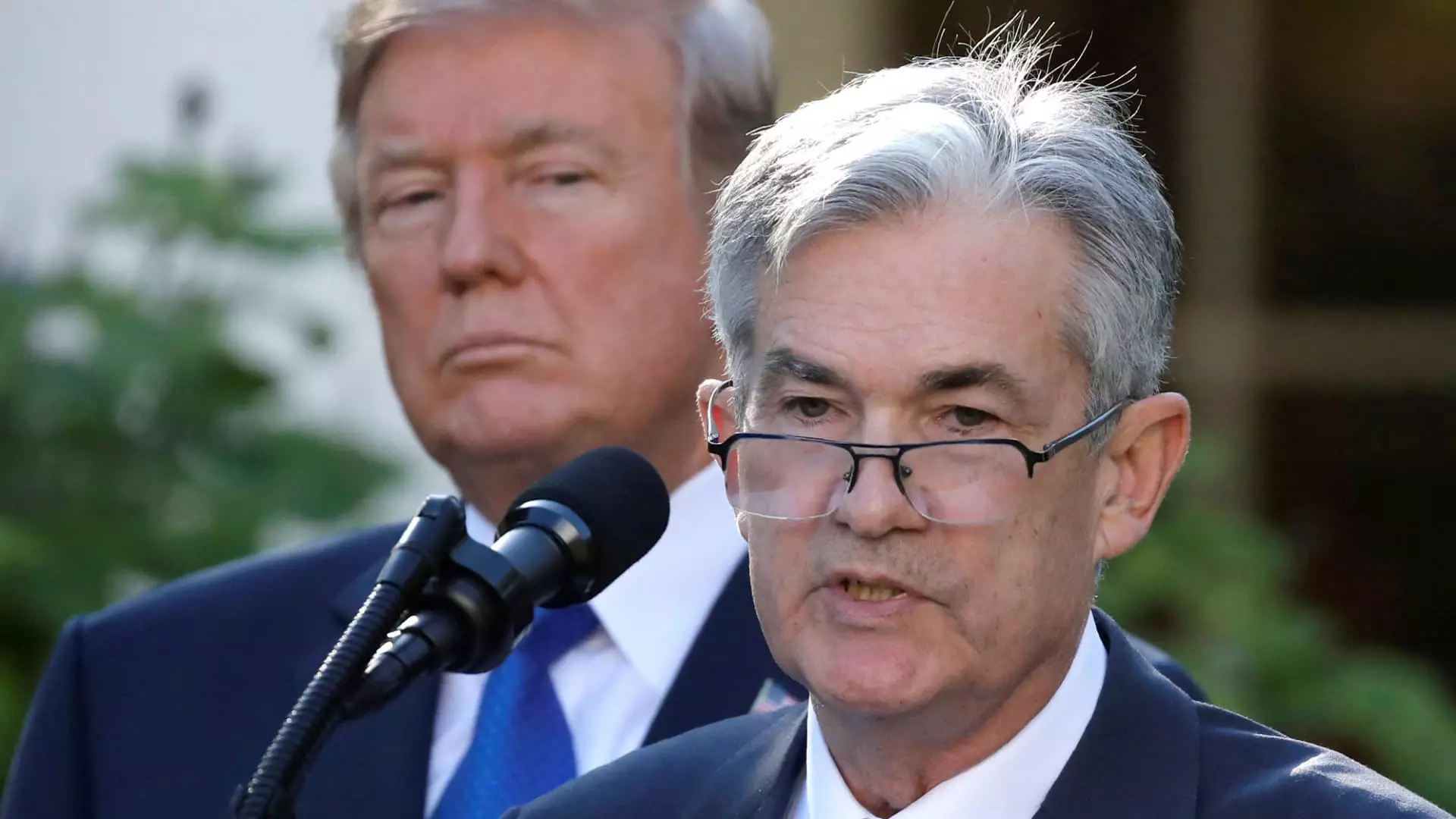The role of the Federal Reserve in shaping the economy can often seem intangible, yet the consequences of its decisions lay heavily on the shoulders of everyday Americans. Currently, the political spotlight is glaring on Federal Reserve Chair Jerome Powell, as President Donald Trump’s unrelenting critique adds a layer of pressure that complicates the Fed’s mandate to focus on monetary policy rather than political maneuvering. While the angst around the Fed’s inaction grows, the stark reality is that the central bank is likely to hold interest rates steady in light of an economy buckling under the strain of high prices and soaring borrowing costs.
Political Pressure and Economic Realities
Trump’s public dissent, underscored by frequent attacks on Powell, underscores a disturbing trend where political agendas clash with economic prudence. The president’s assertion that high federal interest rates hinder growth for businesses and consumers alike introduces a cacophony of noise into the decision-making process at the Fed. The futures market reveals little anticipation of an interest rate cut across the next few months, making it clear that the Fed is navigating turbulent waters, unsure of its next prudent step.
At the heart of this debate is the federal funds rate, a critical benchmark that dictates how much banks charge each other for overnight loans. This rate doesn’t just affect banks; it ripples through the financial ecosystem, influencing everything from mortgages to credit card terms, creating increasingly precarious situations for average consumers struggling to manage their finances.
The Fiscal Strain on Average Americans
The struggle for the average consumer is real and palpable. The weight of persistent inflation and high-interest rates has created a vicious cycle where Americans find themselves stuck between rising living costs and stagnant wages. The consumers’ dream of borrowing for home or car purchases now feels like an elusive fantasy, especially as average credit card rates hover just above 20%. For many, this translates to unmanageable debt and anxiety, further exacerbating the turmoil of modern financial life.
Analysts echo this sentiment, with LendingTree’s chief credit analyst Matt Schulz asserting, “Most Americans don’t have a ton of wiggle room.” Indeed, many find themselves squeezed by high interest rates, which are often met with either stagnating incomes or lower purchasing power. The ideal of economic recovery seems distant, as the immediate effects of the Fed’s decisions create a significant roadblock.
Credit Card Debt: A Drowning Tide
Credit card debt stands as a glaring pain point for many. With rates escalating under the pressure of the Fed, borrowers are left scrambling for solutions. Schulz reveals that consumers have greater leverage than they perceive, particularly those with strong credit scores. Switching to a zero-interest balance transfer card can act as a lifeline for those ensnared in high-interest debt. Yet, the reality remains that many individuals remain unaware of their options, highlighting a gap between financial literacy and economic necessity.
The battles individuals face extend beyond just credit cards. The challenge of securing favorable mortgage rates lingers overhead, with 30-year fixed mortgage rates standing stubbornly near 6.9%. Limited housing inventory exacerbates the problem, trapping potential home buyers in a cycle of rising costs and reduced accessibility. Summer home-shopping enthusiasts prepared for a market thaw may find themselves met with the same chilling rates they hoped would soften.
Auto Loans and Trade Policies: Compounding Financial Woes
Auto loans present yet another financial hurdle. Even though these loans are fixed and unaffected by the Fed’s decisions, the ripple effects of escalating car prices make it difficult for potential buyers to take the plunge. The average car loan rate sits at approximately 7.24%, with many households now paying well over $1,000 for their monthly vehicle payments. This scenario becomes even more vexing with the looming threat of tariffs impacting prices further.
Interconnected dots between trade policies and consumer affordability create an intricate web of challenges. As costs rise and purchasing power diminishes, maintaining the act of buying or even financing basic necessities feels nearly impossible for too many families.
A Glimmer of Hope for Savers
Conversely, amid the swell of desperation, there lies a silver lining for savers. With competitive online savings accounts yielding more than 4%, the potential for earning a decent return exists for those who are fortunate enough to have funds to save. However, the ongoing balance between interest rate stability and the costs of living highlights a deeply flawed economic system that fails to synchronize the interests of borrowers and savers.
In navigating these complex economic realities, one must question whether the Fed can indeed remain detached from political pressures in its pursuit of financial stability. As consumers grapple with the tightening grip of economic strain, the choices made by the Federal Reserve could either exacerbate these challenges or pave the way for hope. The imperative for balance and prudence has never been clearer, but whether that imperative can cut through the cacophony of political agendas remains a question that demands immediate attention.

